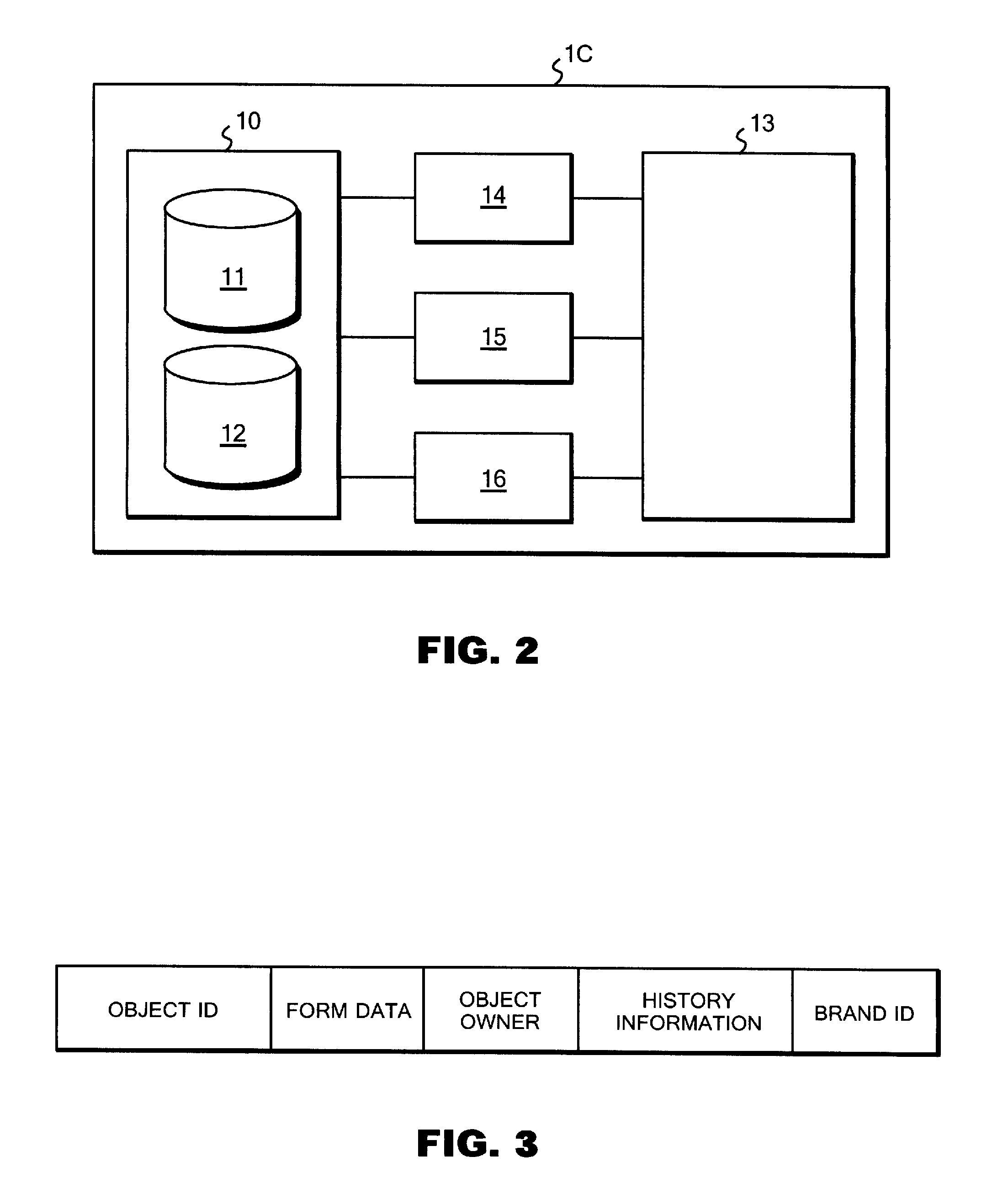System, method, and computer program for determining whether object is genuine or fake in metaverse
a technology of metaverse and object, applied in the field of metaverse object genuine or fake determination, can solve problems such as unauthorized copies or the like, copying becomes a serious problem, and inhibiting users' free activities
- Summary
- Abstract
- Description
- Claims
- Application Information
AI Technical Summary
Problems solved by technology
Method used
Image
Examples
example 1
[0045]Hereinafter, as Example 1, a description will be given of a case of determining whether a bag object (accessory object), which is an object in the Metaverse, is genuine or fake.
[0046]FIG. 3 is a schematic view of the data structure of the object database 11 according to Example 1. As shown in FIG. 3, entries (records) in the object database 11 include: object IDs for specifying individual bag objects; 3D form data of bag objects in the Metaverse; object owner information for specifying the owners of the bag objects; history information indicating an update history of the bag objects; and brand IDs (authenticity information) each pointing to management information of the corresponding bag object. Meanwhile, FIG. 4 is a schematic view illustrating the data structure of the management database 12 according to Example 1. As shown in FIG. 4, entries (records) in the management database 12 include: brand IDs (authenticity information) for specifying the brands; manager information (...
example 2
[0069]In Example 1, a case of determining whether a bag object in the Metaverse is genuine or fake has been described. In Example 2, a case of determining whether an employee badge object I in the Metaverse is genuine or fake will be described. FIG. 17 is a schematic view of the data structure of a management database 12 according to Example 2. As shown in FIG. 17, entries in the management database 12 include: corporate IDs (authenticity information) for specifying the companies, instead of brand IDs for specifying the brands; owner information (authenticity information) for specifying the owner of each employee badge object, instead of manager information for specifying the manager of each brand; company names showing names of the companies (authenticity information), instead of names of the brands; and company logo data (authenticity information) instead of the brand logo data.
[0070]A description will be given of an enquiry for the employee object I with reference to FIG. 16. A c...
example 3
[0071]In Example 1, a case of determining whether a bag object in the Metaverse is genuine or fake has been described. In Example 3, a case of determining whether a ticket object T of an event held for a certain time period in the Metaverse is genuine or fake will be described. FIG. 18 is a schematic view of the data structure of a management database 12 according to Example 3. As shown in FIG. 18, entries in the management database 12 include: event IDs (authenticity information) for specifying the events instead of brand IDs for specifying the brands; sponsor information (authenticity information) for specifying the sponsor of each event instead of manager information for specifying the manager of each brand; event names showing names of the events (authenticity information) instead of names of the brands; event logo data (authenticity information) instead of the brand logo data; and period information indicating the valid period of the event.
[0072]A description will be given of a...
PUM
 Login to View More
Login to View More Abstract
Description
Claims
Application Information
 Login to View More
Login to View More - R&D
- Intellectual Property
- Life Sciences
- Materials
- Tech Scout
- Unparalleled Data Quality
- Higher Quality Content
- 60% Fewer Hallucinations
Browse by: Latest US Patents, China's latest patents, Technical Efficacy Thesaurus, Application Domain, Technology Topic, Popular Technical Reports.
© 2025 PatSnap. All rights reserved.Legal|Privacy policy|Modern Slavery Act Transparency Statement|Sitemap|About US| Contact US: help@patsnap.com



